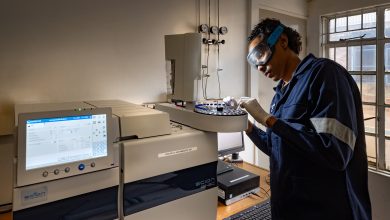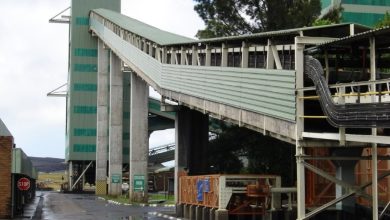
MINING BUSINESS AFRICA hears from two practitioners at ENS about the implications of the Sub-regulations of regulation 8.10 of the Mine Health and Safety Act (MHSA) on diesel-powered Trackless Mobile Machinery (TMMs) in the South African mining environment. Pieter Colyn is a Mine and Occupational Health and Safety Executive and Head of Department, and Warren Hendricks is a Mine and Occupational Health and Safety Executive. This article captures the gist of their views.
On Wednesday, 21 December 2022, the Minister of Mineral Resources and Energy declared, by notice under GNR.2908 in Government Gazette No. 47790, that sub-regulations 8.10.1.2(b) and 8.10.2.1(b), of regulation 8.10 of the Mine Health and Safety (“MHS”) Regulations, came into force and were effective from the date of said publication. In summary, these sub-regulations require the employer at a mine to provide for the “means”, also known as the so-called Prevent Potential Collision System (“PPCS”), to automatically “retard” (and “stop”) diesel-powered Trackless Mobile Machinery (“TMMs”) to prevent potential collisions between diesel-powered TMMs and pedestrians; and between diesel-powered TMMs and other diesel-powered TMMs, respectively.
Primary duty with the employer
The primary duty to comply with the requirements of the said sub-regulations, rests with the employer, at a mine, for purposes of the Mine Health and Safety Act, 1996 (“the MHSA”). For those employers that have diesel-powered TMMs at a mine, and where there is a “significant risk” of the occurrence of the categories of collisions as set out in sub-regulations, the expectation is that the employer must comply with such regulations. This would mean that employers must ensure that their existing fleet of diesel-powered TMMs used at a mine are equipped with such PPCS.
Significant risk determines obligation
Regulations 8.10.2 of the MHS Regulations require employers to take “reasonably practicable measures” to ensure that persons are prevented from being injured as a result of collisions between diesel-powered TMMs, and/or collisions between diesel-powered TMMs and pedestrians. The aforementioned imparts discretion on the employer to implement such measures at a mine, which takes into account the standard prescribed in the MHSA of “reasonably practicable.”
It should be noted that the regulatory obligation to provide the “means” or so-called PPCS, as part of the above “reasonably practicable measures”, only arises where there is a “significant risk” of the respective categories of collisions as set out in the sub-regulations. It is further important to note that to fall within the regulatory obligation, the risk must be significant. For instance, if there is a risk of such collisions at a mine, but such risk is not significant, then the regulatory obligation would not apply to such mine and employer.
Comprehensive risk assessment
Whether the risk of the relevant collisions is “significant” at a particular mine, would be informed by the conduct of a comprehensive risk assessment process conducted at such a particular mine, as envisaged in section 11 of the MHSA. Each mine will yield different results depending on the particular circumstances at each mine, and will be informed by way of example and by, amongst others:
- Previous incidents at a mine involving collisions between TMMs, and the statistics related thereto. The nature or extent of the risk of such collisions occurring at the operations should be determined. Also the effect of any such collisions (i.e. fatal, injury or merely minor property damage, etc.). The frequency or reduction of such incidents at the operations would also be considered, for instance, since the implementation of safety measures or controls, etc;
- The interaction (and means of separation) between TMMs at the various areas of a mine;
- The existing measures or controlsin place to mitigate the risk of collisions between such TMMs at each mine; and
- The requirements of “reasonably practicable”etc.
- If there is a significant risk of the relevant collisions at a mine, then it would be incumbent on the employer to ensure that it has appropriate implementation plans/schedules/timetables in place, in relation to compliance with the requirements contained in sub-regulations. It would be prudent for the employer to inform the regional regulator of its implementation strategy. If potential timelines are provided to the regulator in such context, same should be, as far as is possible, realistic, practicable and made subject to any matters which may be outside the control of the employer or matters that may only be considered at a later stage that may influence any potential implementation.
- Should the compliance with certain of the duties and obligations (as set out in regulation 8.10 of the MHS Regulations) be impractical and/or burdensome on the employer, a potential option to consider is an application for exemption (from all or certain sub-regulations or requirements therein) which may be made to the Minister of the Department of Mineral Resources and Energy (“DMRE”) in terms of section 79 of the MHSA. Essentially, an employer may make an application to be exempt from the application from the requirements of the sub-regulations. Each application will be dealt with on its own merits and, likely, on a stringent basis by the office of the Minister of the DMRE considering same. Accordingly, succinct and detailed reasons would have to be set out therein, as to why exemption is appropriate in the circumstances.
Compatibility of PPCS to fleet
In several cases, Original Equipment Manufacturers (“OEMs”) of diesel-powered TMMs do not supply TMMs with PPCS for use at a mine. As such, the employer would be obligated to source compatible PPCS (and related interface and/or communication systems) from specialist OEMs providing such systems.
In doing so, employers also have to take into account the compatibility of such systems to their entire fleet of diesel-powered TMMs (all of which are not likely from the same OEM, year, model, specification, etc.), to ensure that same is tested (in the various mining environments and operational circumstances that may exist at a particular mine) and consider the need to modify and/or replace (due to year, age) certain TMMs to ensure compatibility. The exercise, to say the least, involves the outlay of significant capital expenditure and the requirement to assess, test and implement, in a very limited period of time.
As it stands, and potentially, employers who are not compliant with the requirements of the sub-regulations may be subjected to, amongst others, possible instructions from the regulator to halt/stop mining operations (or TMM operations), administrative fines and/or criminal liability, etc.
Practical complexities
However and whilst the regulations may have good intent, it is unfortunate that the sub-regulations as gazetted do not provide for any grace or transitional period. Apart from the cost implications and possible penalties, the practical complexities of investigating, acquiring and implementing systems may also result in matters which may be beyond the control of the employer. This may include, amongst others:
- That an employer will have to rely on collaborative efforts between multiple and respective OEMs. This may, in itself, take an extended period, i.e. selection, compatibility, negotiation, contract, testing, etc. OEMs will also have to consider the potential for further product and risk liability, and the OEMs will also possibly have to revise and implement additional measures to mitigate same;
- Even assuming that OEMs are willing to collaborate, the testing and practical application of such systems at a mine will, in all likelihood, take an extended and unpredictable period, with “trial and error”. Further, this will depend on the results that same will yield at the relevant time, taking into account the health and safety of all persons (the improper introduction and implementation of such systems may create further risks); and
- The immediate availability and supply of such systems from OEMs, for the population of all relevant TMMs at a mine.
Opportunity for Engagement
There is some respite, though. In several regions, the regulator (in the form of the office of the regional Principal Inspector of the Mine Health and Safety Inspectorate of the DMRE) has provided employers with the opportunity to engage with the regulator and submit implementation plans/schedules/timetables in relation to compliance with the requirements contained in sub-regulations. This process, however, is not uniform (across the various regions) and is subject to the regulator’s ultimate approval regarding any periods and proposals provided in such implementation plans/schedules/timetables.
Employers as forerunners
In the bigger scheme of things, notwithstanding the aforementioned challenges, the sub-regulations open a new chapter in the drive to mitigate the collision of mining vehicles. Employers in South Africa (in conjunction with OEMs) have an opportunity to be the forerunners in the investigation, design, installation, testing, certification and utilisation of such “means” in various mining environments. This brings about opportunities for OEMs to develop new and innovative systems for application at a mine, locally and internationally.
Thus, to ensure compliance with their respective health and safety obligations in terms of the MHSA, OEMs and employers would enter into partnerships to test such systems in “real world” mining environments, which vary and differ from operation to operation. The collaborative arrangements between OEMs and employers will assist in implementing safe and healthy parameters for such systems to operate in such environments.
ENS is the only law firm in Africa with a dedicated Mine and Occupational Health and Safety team/department. Its practitioners specialise in providing advice and assistance to an array of clients in, and outside, the mining industry. They provide practical and innovative solutions in complying with the legislative requirements; opposing prejudicial regulatory oversight and enforcement; appearing on behalf of clients in legal proceedings, as well as assisting clients with the preparation of exemption applications in terms of section 79 of the MHSA.






